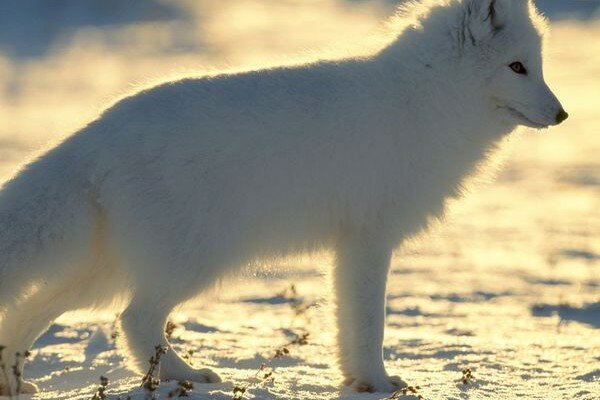
5 Animals Living in Extreme Cold
Let’s talk about five magnificent Arctic animals and their distinguishing characteristics that allow them to survive the cold.
The Arctic Fox

This amazing and beautiful animal is well adapted to living in the tundra. It has a compact body with short legs, ears, and muzzle. Its fur is very dense and changes colors according to the seasons. In winter, the fur is white to help it blend in with the snow and in the summer months, it turns brown for camouflage amongst the plants and rocks. Their paws have thick hair in between the foot pads for traction on icy terrain and for protection from the arctic cold. Arctic foxes are scavengers and have a varied diet ranging from berries and seaweed to rodents and fish. When food is scarce, they are adept at scavenging the remains of a polar bear’s dinner.
The Polar Bear
They are the largest meat eating mammals in the world and, together with the brown bear, are the largest bear of the species. Recognized by their white fur, they actually have dark black skin that soaks up the sun’s rays and preserves heat. Beneath the skin is a thick layer of fat that serves two purposes: keep them warm and fed during lean times. Their fur is very dense close to the skin but has hollow guard hairs at the end which help keep it from matting. They spend a lot of their life floating on ice floes and swimming in the ocean because their main food sources are ringed and bearded seals. To facilitate swimming, polar bears have slightly webbed and large paws that propel them in the water. Fur grows in between the pads to insulate them from the freezing water and to give them traction over land. Other traits that evolved to help them adapt to the arctic cold are an elongated body, stocky legs, and small ears and tail.
The Narwhal Whale
The unicorn of the sea, the name actually means “corpse whale” because it swims belly up and lays motionless for a few minutes near the sea surface. It could also be a reference to its mottled grey and white skin. Its most prominent characteristic is a large protruding ivory tusk that is embedded 15 inches into the head and grows out to reach lengths of up to 18 feet! To protect them from the freezing water, a thick four inch layer of blubber insulates their body. Squid, flatfish, cod, and shrimp make up their diet. It is one of the bigger fresh-water fish that swims around these regions.
The Walrus
is the largest of the Pinnipeds (seals and sea lions). They live in shallow waters near ice floes or the coastline. Their distinguishing characteristics are two protruding tusks, whiskers, and flippers. The tusks make it difficult for the walrus to feed on the clams, snails, crabs, and shrimp that make up their diet so they use their whiskers to help in the search for food. A 5 inch thick layer of blubber insulates them underneath their thick and wrinkly skin.
The Arctic Hare
This hare is much different looking than its relatives living in warmer climates. It is smaller and has long haired thick fur that changes colors with the seasons. In winter, it is white and in summer, it turns grayish brown. Short, black rimmed ears help them conserve heat. In comparison to other rabbits, their feet are huge! Working much like a snowshoe, their feet help them walk on top of the snow. Interestingly, the arctic hare stores body fat in the summer. It survives the brutal cold by digging holes in the snow or ground to keep warm. Their diet consists of grasses, willow, berries, and flowers.